When you buy through our links, we may earn a commission. Products or services may be offered by an affiliated entity. Learn more.
For many who suffer from back and joint pain, a lack of quality sleep can exacerbate pain and create a cycle of pain and poor sleep. Sometimes, simply sleeping on the wrong mattress can flare up or worsen back and neck pain.
If you’re experiencing discomfort, it goes without saying that you should speak with your doctor. However, a quality orthopedic mattress that’s suited to your body and sleep preferences can help keep back, neck, and joint pain at bay. The right model can help alleviate pressure and promote spinal alignment, reducing or preventing aches and pains and enabling a deeper, more restorative sleep.
- Our top choice — The WinkBed — consistently scores high marks in our Test Lab and in customer reviews for alleviating back pain and supporting proper spinal alignment.
- Many shoppers struggle with selecting an orthopedic mattress due to the overwhelming number of options. Read more about how to choose in our buying guide.
- If you’re ready to get to the reviews, catch up quickly with our 1-minute videos.
Our Top Picks
-
Best Mattress Overall – WinkBed
View Details
-
Best Mattress for Side Sleepers – Helix Midnight
View Details
-
Best Firm Mattress – Plank Firm Luxe
View Details
Swipe for more
Best Mattress Overall
WinkBed
9.4 /10
Test Lab Score
30% off all WinkBeds mattresses
30% off all WinkBeds mattresses
The WinkBed scores highly in almost every performance category, boasting liberal airflow, responsiveness, and stellar edge support for getting in and out of bed. It’s built with durable materials that resist sagging to stay supportive over time.
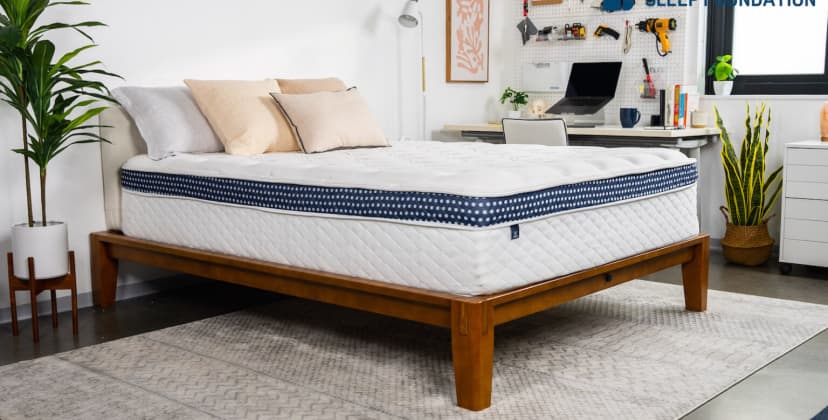
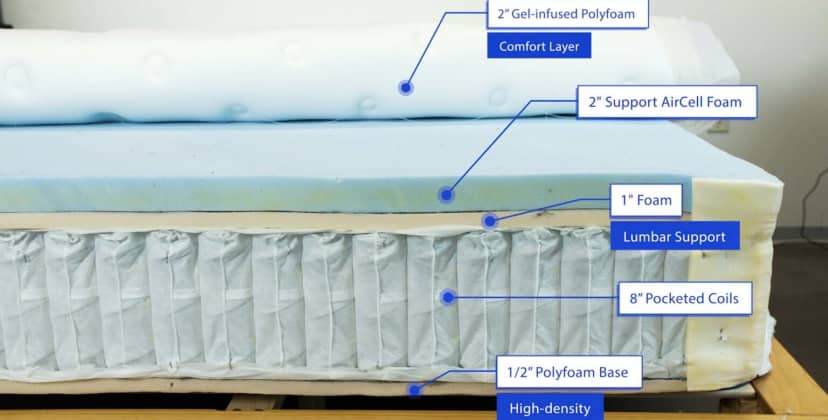
Credit: Sleep Foundation Test Lab
Price
$2,570
Mattress Type
Innerspring
Firmness Options
Medium Soft (4), Medium Firm (6), Firm (7), Firm (8)
Trial Period
120 nights (30 night requirement)
At a Glance
- Who It’s Best For: Most sleepers, depending on firmness level.
- Feel: Sturdy to support good sleeping posture, with cushioning to prevent pressure buildup.
- What It’s Made Of: Euro-top containing several layers of polyfoam or latex with added padding under the lower back. All four models have a zoned coil support core with reinforced edges and a breathable Tencel cover.
- What We Don’t Like: May need help moving and rotating the mattress. Some motion transfer.
Scoring & Reviews
The following ratings show how suitable this mattress is for different sleeping positions and sleeper weights. These scores are determined by how well the mattress supports and relieves pressure for each sleeper type.
We performed a meta-analysis on 8573 validated customer reviews of the Winkbed. This is what people who bought the mattress had to say:- Pain Relief and Support: A significant number of users report alleviation of back, hip, and shoulder pain, attributing this to the mattress’s supportive design. Individuals with chronic back issues have noted substantial improvements in sleep quality.
- Comfort Across Sleep Positions: Reviewers from various sleep positions—side, back, and stomach—find the mattress comfortable. The availability of different firmness levels allows users to select options that best suit their sleeping style.
- Temperature Regulation: Many customers appreciate the mattress’s ability to stay cool, enhancing overall comfort throughout the night.
- Edge Support: Users frequently mention the robust edge support, which provides a stable and usable sleeping surface across the entire mattress.
- Firmness Options: Customers appreciate the variety of firmness options available, finding the right balance for their personal preferences.
- Durability and Craftsmanship: The mattress is often praised for its high-quality construction and materials, with users expressing confidence in its longevity. The lifetime warranty further reinforces trust in the product’s durability.
- Customer Service and Trial Experience: Customers value the 120-night risk-free trial and responsive customer service, noting that these factors contribute to a positive purchasing experience.
Full Details
Construction Breakdown
All versions of the WinkBed feature pocketed coil support cores. The coils are thicker and stronger beneath your midsection, creating extra pushback for added weight in your chest, stomach, and hips, while thinner coils cradle the head and legs.
Thicker coils also line the perimeter to protect the edges from excessive sinkage. A cover of breathable Tencel fabric encases the mattress. The Tencel has moisture-wicking properties and air circulates freely through the support core, so the WinkBed should sleep cool for most people.
Trial, Shipping, and Warranty
Standard ground shipping is free in the contiguous U.S., and each order includes a 120-night sleep trial. If you aren’t satisfied with your initial firmness selection, WinkBeds allows you to exchange the original mattress for a model with a different feel. The replacement model comes with its own 60-night trial period. Whichever model you choose to keep is backed by a lifetime warranty.
Best Value Mattress
Brooklyn Bedding CopperFlex Hybrid
8.1 /10
Test Lab Score
25% off sitewide with code: WINTER25
25% off sitewide with code: WINTER25
If you’re looking for an orthopedic mattress that won’t break the bank, the Brooklyn Bedding CopperFlex Hybrid is a great match for both criteria. The standout feature of this wallet-friendly hybrid is the zoned transitional foam, which provides extra support for your midsection to keep your entire body on an even plane and prevent pressure buildup in your shoulders, lower back, and hips.

Credit: Sleep Foundation Test Lab
Price
$699
Mattress Type
Hybrid
Firmness Options
Medium Firm (6)
Trial Period
120 nights (30-night requirement)
At a Glance
- Who It’s Best For: People who run hot in bed, sleep on their side and/or back, and weigh 230 pounds or less.
- Feel: Medium firm (6) with plush foam layers cushioning the surface, a zoned transitional layer for extra midsection support, and base coils that provide a mellow bounce.
- What It’s Made Of: Comfort layers of polyfoam and copper-infused memory foam, followed by three-zone transitional foam and pocketed coils with reinforced edges.
- What We Don’t Like: People who weigh more than 230 pounds – especially stomach sleepers – may find the mattress too soft.
Scoring & Reviews
The following ratings show how suitable this mattress is for different sleeping positions and sleeper weights. These scores are determined by how well the mattress supports and relieves pressure for each sleeper type.
We performed a meta-analysis on 549 validated customer reviews of the Brooklyn Bedding CopperFlex Hybrid. This is what people who bought the mattress had to say:- Pricing and Value: Many reviewers have noted the mattress is affordablly priced given its quality and craftsmanship, making it an excellent option for shoppers following a budget.
- Heat Regulation: Several users say the mattress retains little to no heat, resulting in a comfortable night’s sleep for people who tend to run warm in bed.
- Edge Support: Users report the mattress has great edge support, pointing to the sturdy coil support system and reinforced perimeter.
- Odor and Off-Gassing: Some reviews mention that the mattress emits some off-gassing odor after being unboxed, which is common for new mattresses with foam layers. The smell will eventually dissipate.
- Foam Option: Shoppers appreciate the all-foam CopperFlex, allowing them to choose between two distinct types based on what they need most as a sleeper.
- Customer Service: Positive feedback about Brooklyn Beddng’s customer service team indicate the company is helpful and responsive when issues arise.
Full Details
Construction Breakdown
The Brooklyn Bedding CopperFlex Hybrid begins with comfort layers of adaptive polyfoam and copper-infused memory foam encased in a Euro-top cover. These materials are intended to contour closely without trapping too much heat. Another memory foam layer adds extra cushioning, while zoned transitional foam pushes back against the weight of your torso and hips to prevent excessive sinkage.
The support core contains pocketed coils over high-density base foam. Coils running the length of both sides are reinforced to minimize compression when you sleep close to the edges or get in and out of bed. Since the mattress measures 12 inches thick, you can use any standard fitted sheet and won’t need to buy a deep-pocket set.
Trial, Shipping, and Warranty
Standard shipping is free of charge for orders within the contiguous U.S. Each purchase includes a 120-night trial, and if you decide to keep the CopperFlex Hybrid, the mattress is further covered under Brooklyn Bedding’s lifetime manufacturer’s warranty.
Best Mattress for Side Sleepers
Helix Midnight
9.1 /10
Test Lab Score
25% off sitewide with code WKFLSH25
25% off sitewide with code WKFLSH25
Designed with side sleepers in mind, the Helix Midnight features soothing layers of memory foam and polyfoam that cradle your hips and shoulders. The support core is reinforced along the sides, offering a secure surface that you can lean on when getting in and out of bed. The bed also sleeps cool compared with other memory foam mattresses.
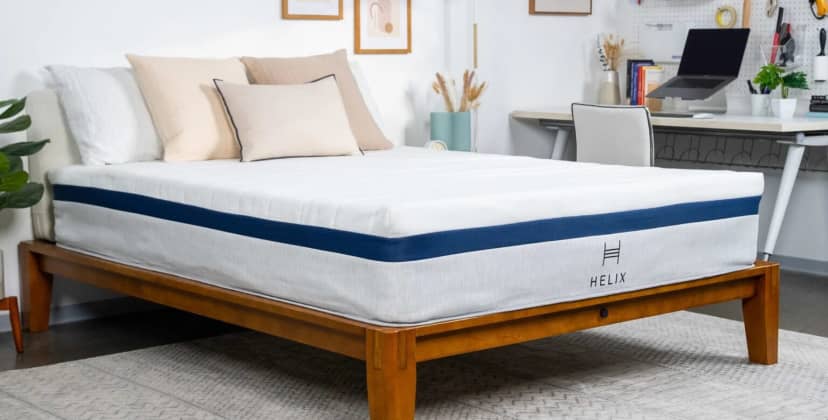
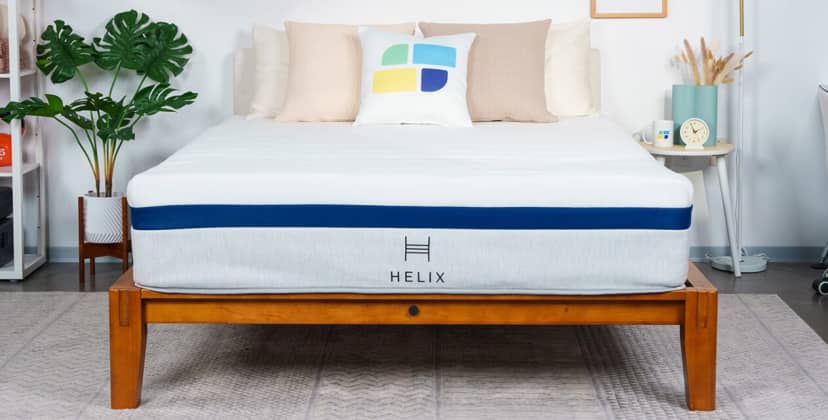
Credit: Sleep Foundation Test Lab
Price
$1,099
Mattress Type
Hybrid
Firmness Options
Medium Firm (6)
Trial Period
120 nights (30-night requirement)
At a Glance
- Who It’s Best For: Side sleepers and back sleepers between 130 and 230 pounds.
- Feel: Medium firm (6) with a deep pressure-relieving cradle and support to prevent back and joint pain when lying on your side.
- What It’s Made Of: Top layer is memory foam, followed by two layers of polyfoam. Support core is an 8-inch layer of pocketed coils and a thin layer of high-density polyfoam.
- What We Don’t Like: Too soft for stomach sleepers.
Scoring & Reviews
The following ratings show how suitable this mattress is for different sleeping positions and sleeper weights. These scores are determined by how well the mattress supports and relieves pressure for each sleeper type.
We performed a meta-analysis on 6653 validated customer reviews of the Helix Midnight. This is what people who bought the mattress had to say:
- Comfort and Firmness: Most reviewers praised the mattress for its medium-firm feel, which strikes a balance between support and plushness. Side sleepers in particular reported enhanced comfort due to effective cradling of pressure points.
- Heat Regulation: While many found the mattress sufficiently cool, some customers noted slight heat retention, which is typical for mattresses with foam comfort layers.
- Pain Relief: A standout theme was relief from back, hip, and shoulder pain. Customers with chronic pain or those who sleep on their sides frequently noted a reduction in discomfort.
- Durability Concerns: A minority of reviewers reported early signs of sagging or indentations, raising concerns about long-term durability.
- Sleep Quality: Numerous customers mentioned improved sleep quality, citing deeper, uninterrupted rest as a key benefit.
- Edge Support: Reviews indicated mixed opinions, but the mattress generally supports weight well at the edges, aligning with what hybrid beds typically offer.
Full Details
Construction Breakdown
A memory foam top layer over a polyfoam transitional layer creates an adaptive yet supportive comfort system. Pocketed coils make up the support core. Thicker coils along the perimeter help reduce sinkage to make you feel more stable when lying close to the edges or getting in and out of bed. The coils also promote steady airflow to maintain a cool, comfortable temperature for the mattress.
Trial, Shipping, and Warranty
Shipping is free for customers in the contiguous U.S. Each purchase includes a 120-night sleep trial and a lifetime warranty against structural defects.
Best Mattress for Spinal Alignment
Nolah Evolution 15
9.2 /10
Test Lab Score
35% off sitewide + extra $100 off with code: SF100
35% off sitewide + extra $100 off with code: SF100
The Nolah Evolution 15 is sold in three firmness levels that aim to provide the right level of back support to different sleeper types. Firmer foams and coils in the middle third of the bed hold up the lumbar area, while softer coils under the hips and shoulders flex to ease pressure and allow the spine to settle onto an even plane.


Credit: Sleep Foundation Test Lab
Price
$1,624
Mattress Type
Hybrid
Firmness Options
Medium (5), Medium Firm (6), Firm (8)
Trial Period
120 nights (30-night requirement), $99 return pickup fee
At a Glance
- Who It’s Best For: Most sleepers, depending on firmness level: side sleepers (softest model) and back and stomach sleepers (firmest model).
- Feel: Medium (5), medium firm (6), and firm (8) options, with the firmer models ranking especially well on edge support, temperature control, and ease of movement.
- What It’s Made Of: Euro-top cotton cover with ArcticTex fibers and quilted with 2 inches of cushioning foam. Next is a layer of polyfoam and two more layers of foam. The support core is zoned pocketed coils, and the base is high-density polyfoam.
- What We Don’t Like: Requires deep-pocket fitted sheets. Firmer models may transfer motion, while plush model lacks edge support.
Scoring & Reviews
The following ratings show how suitable this mattress is for different sleeping positions and sleeper weights. These scores are determined by how well the mattress supports and relieves pressure for each sleeper type.
We performed a meta-analysis on 897 validated customer reviews of the Nolah Evolution 15. This is what people who bought the mattress had to say:- Motion Isolation: Couples note the excellent motion isolation, which minimizes disruptions from partner movements during the night.
- Edge Support: The edge support of the mattress is frequently highlighted, with many finding it adequate for sitting or sleeping near the edge without feeling like they will roll off.
- Softness: Many reviewers discuss the softness of the mattress. Some find it too soft, causing discomfort, especially for heavier individuals, while others appreciate the plushness.
- Pressure Relief and Support: Reviewers frequently highlight relief from back and shoulder pain, attributing this to the supportive foam layers and zoned coil system.
- Heat Retention: A few reviewers note that the mattress retains heat, making it uncomfortable for some, particularly in warmer climates or for those who sleep hot.
- Durability and Quality: Users often comment on the high quality and durability of the mattress, noting that it maintains its shape and comfort over time.
Full Details
Construction Breakdown
The Evolution has a 15-inch profile and is available as a plush (5), luxury firm (6), or firm (8) model. The plush Euro-top is quilted with a cooling foam that conforms to the body, followed by a layer of proprietary AirFoamICE polyfoam.
Together, these layers offer ample contouring to help ease pressure off areas like the hips, shoulders, and spine. Next is a firmer foam layer that prevents the lower back from sinking into the bed, followed by high-density foam for enhanced support. A thick coil system provides strong support but is responsive enough to provide some pressure relief.
Trial, Shipping, and Warranty
Shipping is free to the contiguous U.S. The Nolah Evolution 15 comes with a lifetime warranty, as well as a 120-night trial for those who would like to try out the bed.
Best Mattress for Chronic Back & Joint Conditions
Saatva Rx
8.5 /10
Test Lab Score
$300 off orders of $1,000 or more
$300 off orders of $1,000 or more
The Saatva Rx packs in multiple features that address back and joint pain, including a dual-layer coil system and multiple lumbar reinforcements. Cylindrical-cut foams in the transition layer flex with each individual coil to enhance pressure relief and curb motion transfer. Sleepers can also expect strong temperature control, and with free White Glove delivery, you don’t have to worry about maneuvering the heavy mattress box.

Credit: Sleep Foundation Test Lab
Price
$2,801
Mattress Type
Hybrid
Firmness Options
Medium Soft (4)
Trial Period
365 Nights ($99 Return Fee)
At a Glance
- Who It’s Best For: Side sleepers, as well as some back and stomach sleepers.
- Feel: Medium soft (4) that delivers targeted support to alleviate chronic lower back pain.
- What It’s Made Of: Organic cotton cover with a gel-infused memory foam lumbar pad. Next is a zoned microcoil layer encased in high-density polyfoam, followed by a layer of open-cell foam with cooling phase change material. The support core consists of triple-tempered steel coils with reinforced edges on top of a thin base layer.
- What We Don’t Like: On the expensive side.
Scoring & Reviews
The following ratings show how suitable this mattress is for different sleeping positions and sleeper weights. These scores are determined by how well the mattress supports and relieves pressure for each sleeper type.
We performed a meta-analysis on 40 validated customer reviews of the Saatva Rx. This is what people who bought the mattress had to say:- Comfort and Support: A significant number of reviewers mentioned the comfort and support provided by the Saatva Rx mattress, particularly for those with chronic pain or orthopedic issues. Users reported significant improvements in sleep quality and reductions in pain.
- Product Quality: Feedback on the quality of the Saatva Rx mattress was overwhelmingly positive. Reviewers felt that the mattress was well-made and worth the investment, often citing the materials and construction as superior to other brands.
- Temperature Regulation: Some reviewers appreciated the temperature regulation features of the mattress, noting that it stayed cooler than other mattresses they had used, which contributed to a better sleep experience.
- Issues with Firmness and Support: While most feedback was positive, a few reviewers noted issues with the firmness and support of the mattress, particularly concerning edge support and suitability for lighter individuals. These were minor compared to the overall positive feedback but were important for some buyers’ comfort.
- Return and Exchange Policy: Saatva’s return and exchange policy was frequently mentioned as a positive aspect, with customers feeling reassured by the ability to return or exchange the mattress if it did not meet their needs. This policy enhanced customer confidence in making a purchase.
Full Details
Construction Breakdown
A medium soft (4) feel and thick foam layers ensure deep cushioning and cradling, which can alleviate pressure and soreness along the spine, while a dense memory foam pad beneath the lower back is intended to reduce discomfort in your lumbar region.
The Rx also features pocketed minicoils in the transitional layer. These create a gentle buffer between your body and the support core, which contains standard-size pocketed coils with foam tips to suppress motion transfer. Air flows freely through both coil systems to help the mattress maintain a comfortable surface temperature, while a breathable organic cotton cover encases the mattress and keeps the surface cool.
Trial, Shipping, and Warranty
Saatva offers free White Glove delivery for all U.S. orders. This service includes a scheduled delivery date and time, full assembly in a room of your choice, and removal of your old mattress and box spring upon request. Your purchase comes with a sleep trial spanning on year. If you decide to keep the mattress, you’ll also receive a lifetime warranty.
Best Mattress for Couples
Leesa Sapira Chill Hybrid
9.0 /10
Test Lab Score
25% off sitewide with code: WEEKEND25
25% off sitewide with code: WEEKEND25
The Leesa Sapira Chill Hybrid delivers orthopedic support with cushy foam layers and zoned coils that provide targeted support for your lower back and hips. Couples should enjoy this mattress for its above-average motion isolation, strong edge support, and mellow bounce.
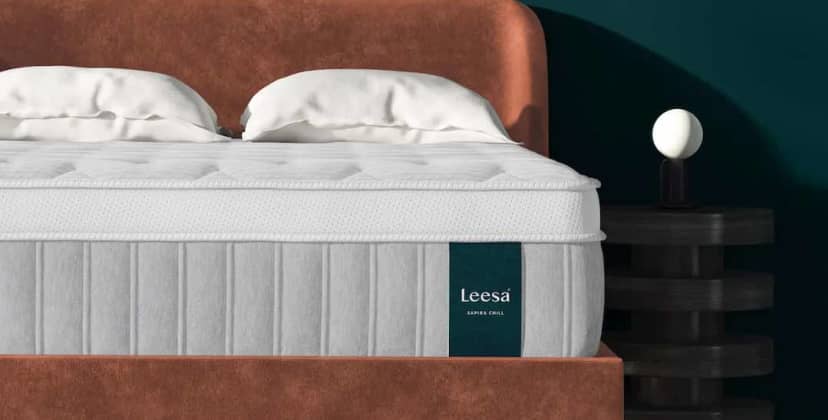
Price
$1,698
Mattress Type
Hybrid
Firmness Options
Medium (5), Medium Firm (6), Firm (7)
Trial Period
120 nights (30-night requirement)
At a Glance
- Who It’s Best For: Side and back sleepers in most weight groups, couples, hot sleepers, and people with lower back pain.
- Feel: Available in medium (5), medium firm (6), and firm (7) designs.
- What It’s Made Of: Four comfort layers, including gel-infused polyfoam and memory foam, over three-zone pocketed coils with perimeter reinforcement and high-density base foam.
- What We Don’t Like: High 14-inch profile requires a fitted sheet with deep pockets, and initial off-gassing odor can be unpleasant for the first few nights after unboxing.
Scoring & Reviews
The following ratings show how suitable this mattress is for different sleeping positions and sleeper weights. These scores are determined by how well the mattress supports and relieves pressure for each sleeper type.
We performed a meta-analysis on 25 validated customer reviews of the Leesa Sapira Chill Hybrid. This is what people who bought the mattress had to say:- Suitability for Different Sleepers: Several reviews highlight that the mattress is suitable for side sleepers, stomach sleepers, and even for those who experience hip and shoulder pain.
- Temperature Regulation: Some reviews mention the mattress being cool and comfortable, while others complain about it sleeping hot, despite being the “Chill” version.
- Quality and Durability Concerns: A few reviewers express concerns about the mattress’s durability or mention receiving a damaged product.
- Overall Satisfaction: While many reviews are overwhelmingly positive, scoring 5 out of 5, there are a few lower scores where users mention issues like the mattress being too soft, too bouncy, or not meeting expectations in terms of firmness and comfort.
- Specific Needs: Some reviews from users with back pain or who have had long-term use of other mattresses indicate that this model significantly improved their sleep quality and comfort.
Full Details
Construction Breakdown
The Sapira Chill features four comfort layers. A two-inch layer of gel-infused polyfoam is sewn to the Euro-top cover, and this is followed by memory foam and adaptive polyfoam layers that provide deep cushioning and contouring. Dense transitional polyfoam creates a comfy buffer between your body and the support core.
The pocketed coils are divided into three zones with thicker springs under your torso and hips – this helps ensure the heaviest areas of your body won’t sink too deeply into the mattress. Thicker coils also line the perimeter to prevent excessive compression when you lie close to the edges of your mattress or get in and out of bed. A thin layer of high-density base foam completes the hybrid design.
Trial, Shipping, and Warranty
Leesa offers free ground shipping to shoppers in all 50 states and select locations in Canada. The Sapira Chill Hybrid comes with a sleep trial spanning 120 nights in length with a required break-in period of 30 nights. If you decide to keep the mattress, it’s also covered under a lifetime warranty against structural and material defects.
Best Mattress for Pressure Relief
Bear Elite Hybrid
8.5 /10
Test Lab Score
40% sitewide with code: SF40
40% sitewide with code: SF40
The Bear Elite Hybrid is available in three firmness options. All three models feature softer foam layers over a zoned coil core, a design that’s intended to give way under sensitive areas in order to prevent pressure buildup. The firmer models offer good edge support to maximize the usable surface area, while the soft model absorbs motion so you and your partner can both sleep soundly.
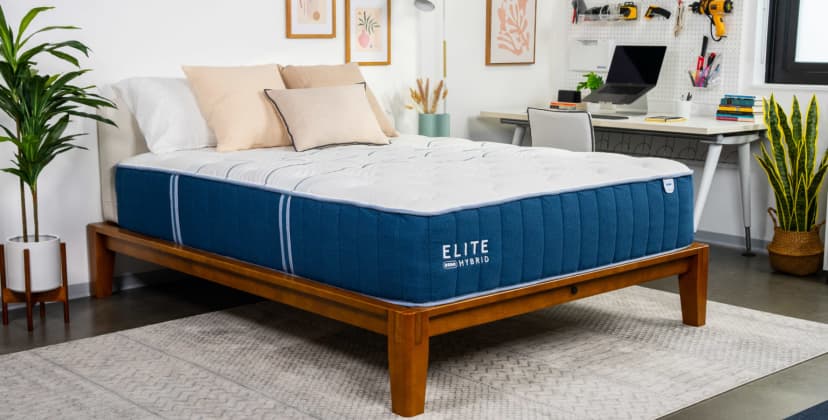
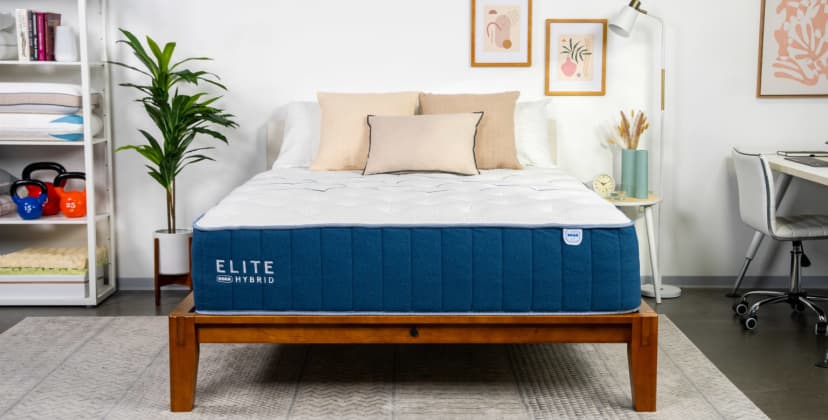
Credit: Sleep Foundation Test Lab
Price
$1,499
Mattress Type
Hybrid
Firmness Options
Medium (5), Medium Firm (6), Firm (8)
Trial Period
120 nights (30-night break-in period)
At a Glance
- Who It’s Best For
- Side sleepers under 230 pounds (soft model), and back sleepers and those over 230 pounds (medium).
- Feel: Medium (5), medium firm (6), and firm (8) models. All provide initial cushioning that gives way to deeper support.
- What It’s Made Of: Quilted cover with cooling phase change material, followed by layers of copper-infused memory foam and transitional polyfoam. Support core is zoned coils, reinforced along the sides. Base is a thin layer of high-density polyfoam.
- What We Don’t Like: Requires deep pocket fitted sheets. May not provide enough support for stomach sleepers.
Scoring & Reviews
The following ratings show how suitable this mattress is for different sleeping positions and sleeper weights. These scores are determined by how well the mattress supports and relieves pressure for each sleeper type.
We performed a meta-analysis on 3703 validated customer reviews of the Bear Elite Hybrid. This is what people who bought the mattress had to say:- Comfort and Support: Many reviewers highlight the mattress’s balance of comfort and support, often mentioning relief from back pain and improved sleep quality.
- Firmness Options: Customers appreciate the various firmness options, with some opting for firmer versions after experiencing discomfort with medium firmness.
- Temperature Regulation: Several reviews note the mattress’s ability to stay cool, which enhances sleep quality, especially in hot weather.
- Size and Upgrade Options: Customers are pleased with the availability of different sizes and the option to upgrade, which provides flexibility for different needs and preferences.
- Quality of Additional Products: Positive remarks on the quality of accompanying products like pillows and sheets, which are often included as free additions.
- Motion Isolation: Many reviewers highlight the mattress’s excellent motion isolation, making it ideal for shared sleeping arrangements.
Full Detail
Construction Breakdown
The Elite Hybrid’s topmost layer is composed of adaptive memory foam that hugs the body without sinking too much. You can choose from three firmness levels. Those who need close contouring to sleep comfortably may want to opt for the medium (5) feel, while the medium firm (6) provides slightly more support.
The firm (8) feel was most popular among our back and stomach sleepers weighing at least 130 pounds. If you and your sleep partner have contrasting firmness needs, you can select a split king with a different feel on each side.
Trial, Shipping, and Warranty
Shipping is free throughout the contiguous U.S. Each order includes two Bear Pillows at no extra cost, but you can also upgrade to a discounted sleep accessories set that includes both pillows, a sheet set, and a mattress protector. Bear’s sleep trial runs for 120 nights, and those who keep their mattress also receive a lifetime warranty against structural defects.
Best Mattress for Hip Pain
PlushBeds Botanical Bliss
9.6 /10
Test Lab Score
$1,250 off + free pillows, sheets, and mattress protector
$1,250 off + free pillows, sheets, and mattress protector
The PlushBeds Botanical Bliss Mattress is made with certified organic materials that are naturally durable and built to provide long-lasting orthopedic support. The mattress features flexible pressure relief from wool and natural latex, resulting in a responsive surface that makes it easy to change positions in order to avoid placing pressure on the same hip for too long. The Botanical Bliss is offered in three height profiles to accommodate sleepers up to 275 pounds.

Price
$1,999
Mattress Type
Latex
Firmness Options
Medium Firm (6), Firm (7)
Trial Period
100 nights (30-night requirement)
At a Glance
- Who It’s Best For: Sleepers with hip pain of virtually any body type or sleeping style.
- Feel: Medium firm (6) or firm (7) options. Buoyant and breathable surface that gently contours without feeling restrictive.
- What It’s Made Of: Organic cotton cover with wool batting, followed by layers of natural and organic latex in different permutations, depending on the height and chosen firmness.
- What We Don’t Like: More expensive than the average foam or hybrid mattress.
Scoring & Reviews
The following ratings show how suitable this mattress is for different sleeping positions and sleeper weights. These scores are determined by how well the mattress supports and relieves pressure for each sleeper type.
We performed a meta-analysis on 4442 validated customer reviews of the PlushBeds Botanical Bliss. This is what people who bought the mattress had to say:- Customizable Firmness: Customers appreciate the ability to adjust the firmness of the mattress by rearranging the internal layers to suit their comfort preferences.
- Chemical-Free Materials: The mattress is praised for being made from chemical-free, organic materials, which is a significant plus for health-conscious buyers.
- Heat Regulation: Several reviews highlight that the mattress does not retain heat, unlike many foam mattresses, providing a cooler sleep experience.
- Pain Relief: Users report significant improvements in back and joint pain, suggesting that the mattress provides excellent support and pressure relief.
- Durability and Quality: The high-quality construction of the mattress is frequently mentioned, with customers expressing satisfaction with the durability and overall build.
- Customer Service: Plushbeds is often commended for their responsive and helpful customer service, assisting customers with questions and concerns efficiently.
Full Details
Construction Breakdown
All the versions of the Botanical Bliss Mattress are constructed with similar materials, but there are variations depending on the thickness and firmness settings. What is particularly unique about the Botanical Bliss Mattress is its customizability. Owners can rearrange the latex layers to adjust the firmness, thereby accommodating changing needs and preferences.
Each option includes a support core composed of two 3-inch Dunlop latex layers. The 9-inch and 12-inch mattresses have a 2-inch comfort layer of organic Talalay latex, while the 10-inch option uses 3 inches. The 12-inch mattress also incorporates an additional 3-inch layer of Dunlop latex to add height and provide a wider variety of customizable firmness settings.
An organic cotton cover encases the mattress, and a layer of organic wool cushions the surface while wicking away heat and moisture.
Trial, Shipping, and Warranty
PlushBeds offers a 100-night sleep trial that includes a 30-night mandatory break-in period. PlushBeds provides free shipping in the contiguous U.S. and a 25-year limited warranty.
Best Firm Mattress
Plank Firm Luxe
8.2 /10
Test Lab Score
25% off sitewide with code: WINTER25
25% off sitewide with code: WINTER25
The Plank Firm Luxe is Brooklyn Bedding’s answer if you’re looking for a nice firm mattress that doesn’t make you feel like you’re lying on a rock. The bed sleeps cool, and people with limited mobility will appreciate the strong edge support when getting in and out of bed.

Credit: Sleep Foundation Test Lab
Price
$1,149
Mattress Type
Hybrid
Firmness Options
Firm (7), Extra Firm (9)
Trial Period
120 nights (30-night requirement)
At a Glance
- Who It’s Best For: Back and stomach sleepers and possibly some side sleepers.
- Feel: Sturdy, responsive sleep surface with a hint of cushioning. You can relax without sinking.
- What It’s Made Of: Thin quilted top stitched in a close pattern. The firm side is layers of high-density and resilient polyfoams, while the less firm side uses thicker quilting and marginally softer foams. Both sides share a 6-inch pocketed coil support core.
- What We Don’t Like: Not enough cushioning for sleepers under 130 pounds, particularly on the extra firm side. May transfer motion.
Scoring & Reviews
The following ratings show how suitable this mattress is for different sleeping positions and sleeper weights. These scores are determined by how well the mattress supports and relieves pressure for each sleeper type.
We performed a meta-analysis on 1748 validated customer reviews of the Plank Firm Luxe. This is what people who bought the mattress had to say:- Comfort and firmness: Many reviewers discuss the comfort level of the mattress, often highlighting its firm feel. While all of those bought the mattress for its firmness, a few people still found the bed too firm.
- Cooling features: Several reviewers mention the cooling features of the mattress, specifically the Glaciotex Cooling Cover, which is appreciated for providing a cooler sleep experience.
- Pain relief: A recurring theme is the relief from back and joint pain, with many users noting improvements in their sleep quality and reduction in pain. Many users report improved spinal alignment, especially those who prefer firmer mattresses.
- Dual firmness options: The mattress’s ability to be flipped for different firmness levels (firm and extra firm) is frequently mentioned and appreciated by those who have different firmness preferences.
- Edge support: A lot of reviewers mention the strong edge support of the Plank Firm Luxe.
- Off-gassing: A few reviewers note the presence of off-gassing when the mattress is new, but it typically dissipates after a few days.
- Customer service: Experiences with customer service are generally positive, with reviewers appreciating the responsive and helpful support team. The 120-night trial period and responsive customer service are frequently noted as key advantages.
Full Details
Construction Breakdown
The firm side begins with fibers quilted into the cover, creating a bit of plushness when you get into bed, followed by two dense polyfoam layers for added cushioning. The extra firm side features less quilting material and one foam layer, so this surface is noticeably firmer and more supportive. Pocketed coils located between the comfort systems serve as the support core for both sides.
If you need extra cooling, you can upgrade your mattress to include a cover made of GlacioTex phase change material that captures and releases body heat on contact. We recommend this addition if you tend to sweat in your sleep, or if your local climate is relatively hot or humid.
Trial, Shipping, and Warranty
Shipping is free in the contiguous U.S., and each order includes a 120-night trial. If you keep the mattress, Brooklyn Bedding also backs it with a lifetime warranty.
Best Mattress for Combination Sleepers
Birch Mattress
8.8 /10
Test Lab Score
25% off sitewide with code WKFLSH25
25% off sitewide with code WKFLSH25
The Birch leverages the natural bounce of coils and latex to deliver a breathable, responsive sleep surface that’s easy to move on. The coils are individually wrapped to help stop motion from rippling across the bed when sleeping with a partner.
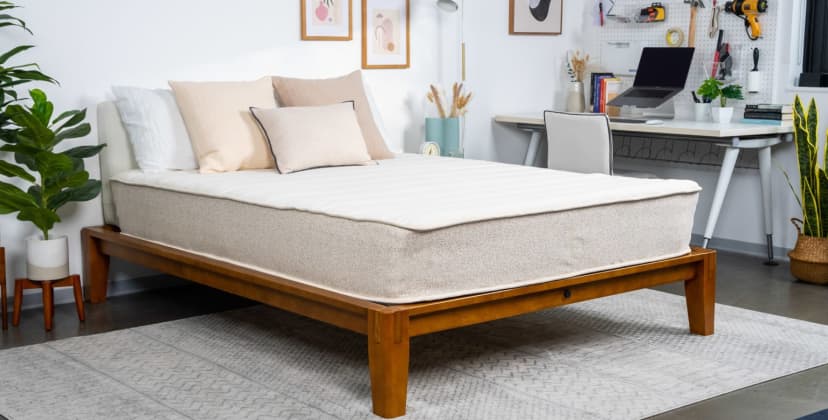
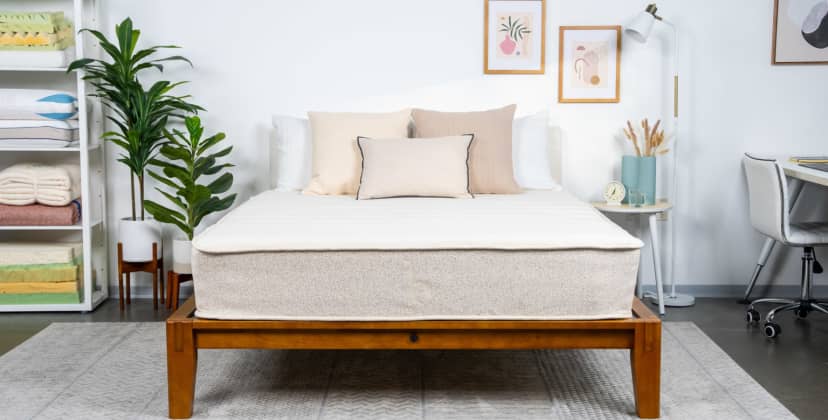
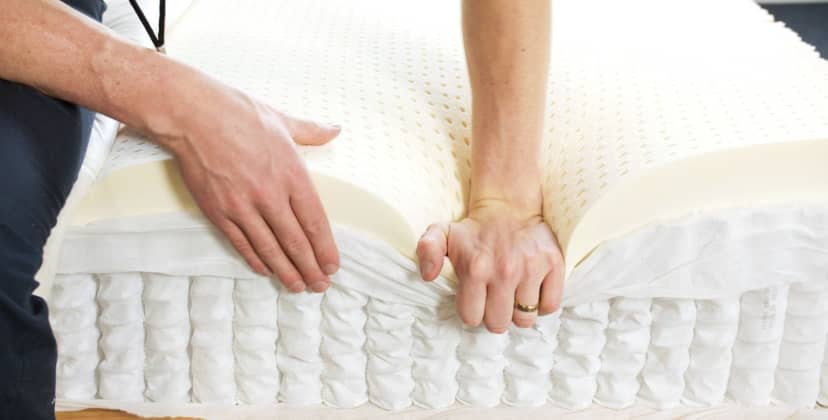
Credit: Sleep Foundation Test Lab
Price
$1,499
Mattress Type
Latex Hybrid
Firmness Options
Medium Firm (6)
Trial Period
120 nights (30-night requirement)
At a Glance
- Who It’s Best For: Side, back, and stomach sleepers over 130 pounds.
- Feel: Floaty. Cushions but doesn’t hug as tightly as memory foam, while the coils provide pushback to take pressure off the spine and facilitate movement.
- What It’s Made Of: Organic cotton cover with layers of resilient wool and natural latex. The support core is made with individually wrapped coils with reinforced sides and a thin wool base.
- What We Don’t Like: May be too firm for those less than 130 pounds.
Scoring & Reviews
The following ratings show how suitable this mattress is for different sleeping positions and sleeper weights. These scores are determined by how well the mattress supports and relieves pressure for each sleeper type.
We performed a meta-analysis on 1917 validated customer reviews of the Birch Mattress. This is what people who bought the mattress had to say:- Comfort and Support: Many reviewers mention the mattress provides excellent support and comfort, particularly noting improvements in back and shoulder pain.
- Dual Firmness: The flippable design offering a choice between firm and soft sides is frequently appreciated, allowing users to customize their sleeping experience.
- Durability and Quality: Customers commend the high-quality, eco-friendly materials and construction, expressing satisfaction with the mattress’s durability and longevity. The use of organic and natural materials not only ensures comfort but also contributes to the mattress’s overall durability.
- Temperature Regulation: Customers appreciate the mattress’s ability to maintain a comfortable sleep temperature, attributing this to its natural and organic materials. The use of organic wool and natural latex contributes to effective temperature regulation, enhancing overall sleep quality. .
- Price: Opinions on the mattress’s price vary, with some finding it a good value and others considering it somewhat expensive.
- Weight and Maneuverability: The mattress is noted to be heavy, making it difficult to move or flip without assistance.
- Smell and Off-gassing: A few reviewers mention an initial off-gassing smell that dissipates over time.
- Edge Support: Mixed reviews on edge support, with some some noting it could be improved.
Full Details
Construction Breakdown
The mattress begins with wool batting layers intended to act as a natural fire barrier. Wool has moisture-wicking properties, so this component also wicks away moisture to keep you dry on hot or humid nights.
Springy Talalay latex forms the comfort layer. Pocketed coils and a wool/rayon fiber batting base make up the support core. The coils are reinforced along the perimeter to minimize sinkage when you lie near the edges of your mattress or get up in the morning.
Trial, Shipping, and Warranty
Birch offers free ground shipping to all 50 states, as well as two complimentary pillows with their purchase. Your order includes a 120-night sleep trial with a 30-night break-in period. Those who keep their mattress receive a lifetime warranty against structural defects.
The Best Deals of the Week
-
Save $199
—
Brooklyn Bedding CopperFlex Memory Foam
$466 (List Price $665) -
Save $600
—
Helix Midnight Luxe
$1,799 (List Price $2,399) -
Save $2,436
—
Nectar Adjustable Bundle
$1,398 (List Price $3,834) -
Save $771
—
WinkBed
$1,799 (List Price $2,570) -
Save $1,020
—
DreamCloud Classic Hybrid
$699 (List Price $1,719)
Best Overall
WinkBed
9.4 /10
Test Lab Score
30% off all WinkBeds mattresses
Shop at WinkBedsA robust hybrid with targeted lumbar support in four firmness options.
See More Details
Best Value
Brooklyn Bedding CopperFlex Hybrid
8.1 /10
Test Lab Score
25% off sitewide with code: WINTER25
Shop at Brooklyn BeddingA competitively priced hybrid that supports the midsection and cushions without restricting movement.
See More Details

Credit: Sleep Foundation Test Lab
Best for Side Sleepers
Helix Midnight
9.1 /10
Test Lab Score
25% off sitewide with code WKFLSH25
Shop at HelixA pillowy hybrid that molds to your hips and shoulders.
See More Details
Best for Spinal Alignment
Nolah Evolution 15
9.2 /10
Test Lab Score
35% off sitewide + extra $100 off with code: SF100
Shop at NolahA hybrid mattress with multi-layer zoning for cradling spinal support.
See More Details
Best for Chronic Back & Joint Conditions
Saatva Rx
8.5 /10
Test Lab Score
$300 off orders of $1,000 or more
Shop at SaatvaAn innovative mattress designed to prevent aches and pains.
See More Details
Best for Couples
Leesa Sapira Chill Hybrid
9.0 /10
Test Lab Score
25% off sitewide with code: WEEKEND25
Shop at LeesaA sturdy, supportive hybrid with minimal motion transfer and appeal for a broad range of sleeping styles.
See More Details
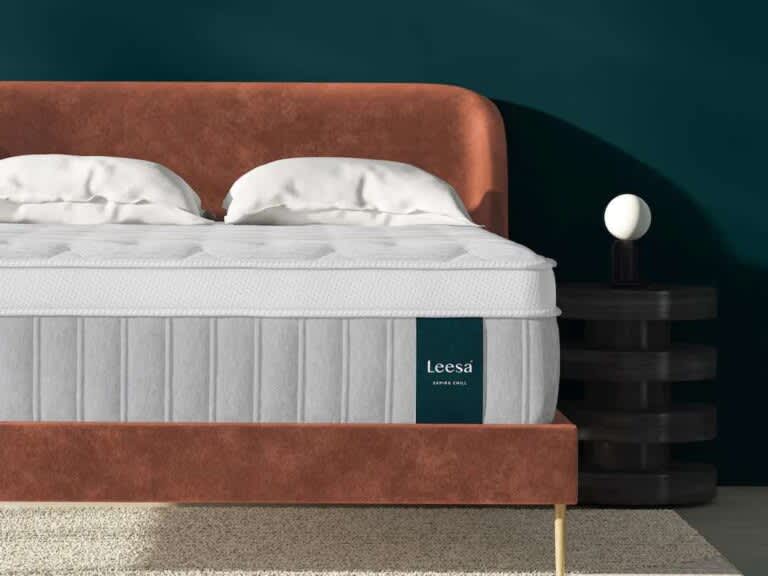
Best for Pressure Relief
Bear Elite Hybrid
8.5 /10
Test Lab Score
40% sitewide with code: SF40
Shop at BearA pressure-relieving hybrid that helps soothe back and joint pain.
See More Details
Best for Hip Pain
PlushBeds Botanical Bliss
9.6 /10
Test Lab Score
$1,250 off + free pillows, sheets, and mattress protector
Shop at PlushBedsA springy latex mattress that gently contours to relieve hip pain.
See More Details
Best Firm Mattress
Plank Firm Luxe
8.2 /10
Test Lab Score
25% off sitewide with code: WINTER25
Shop at PlankHigh-density foams and coils provide firm support where you need it most.
See More Details

Credit: Sleep Foundation Test Lab
Best for Combination Sleepers
Birch Mattress
8.8 /10
Test Lab Score
25% off sitewide with code WKFLSH25
Shop at BirchA supportive latex-and-coil design that performs well for back, side, and stomach sleepers.
See More Details
What Is an Orthopedic Mattress?
Orthopedic mattresses are designed to cradle and support the spine, back, and joints to promote good sleep posture and reduce aches and pains. They’re popular with those who suffer from back and neck pain, seniors, and those recovering from injuries, but they can be a good fit for virtually anyone.
The term “orthopedics” refers to the branch of medicine dedicated to the musculoskeletal system, encompassing the treatment and prevention of conditions affecting bones, joints, muscles, ligaments, and tendons.
Though many companies describe their mattresses as orthopedic, shoppers should be aware that there are no regulations or standards in place defining what qualifies as an orthopedic mattress. Because of this, orthopedic is often used as a marketing term regardless of whether a mattress is specially designed for optimal support. This doesn’t mean, however, that orthopedic mattresses aren’t beneficial to sleepers, just that shoppers should select carefully.
How to Choose an Orthopedic Mattress
A true orthopedic mattress should provide an excellent combination of pressure relief and support. This balance can help promote spinal alignment, reducing the aches and pains many sleepers experience after sleeping on an unsupportive or excessively firm mattress.
Firmness Level
A proper orthopedic mattress offers an ideal combination of cradling and support. If a mattress is too firm, it could contribute to pressure points and make it difficult to maintain proper spinal alignment. If a mattress is too firm, it could contribute to pressure points and lead to neck and hip discomfort. A mattress that is too soft won’t provide enough support, which could put more pressure on your lower back.
While orthopedic mattresses are often slightly on the firmer side, the ideal firmness level will depend on your body type and sleep position. Sleepers who weigh less typically need a softer model to enjoy contouring, while heavier individuals generally need a firmer option for sufficient lumbar support. Similarly, side sleepers often prefer a slightly softer option to reduce pressure buildup, but back and stomach sleepers usually need something firmer to prevent their midsections from sagging.
Pressure Relief
Pressure point relief occurs when a mattress molds to the sleeper’s body and redistributes its weight to reduce the pressure around wider, heavier body parts. This can limit joint discomfort and promote spinal alignment. However, achieving optimal pressure relief also means selecting the right firmness level for your body type and sleep position.
Price
A true orthopedic mattress may be more expensive than other models on the market. This is because striking the right balance between pressure relief and spinal support often requires higher-end materials and/or special design features. While a higher price tag may be a turnoff for some shoppers, a mattress is an investment, so it may be worth spending a little more to get the best option for you. Plus, quality materials should resist signs of wear making the mattress more durable overall.
Motion Isolation
Motion isolation refers to how a mattress reduces the transfer of movement. Preventing the spread of vibrations across the surface can decrease disturbances from sleep partners or pets moving throughout the night. Generally, mattresses with substantial foam comfort layers excel at motion isolation.
According to Dr. Dustin Cotliar, M.D., MPH, motion isolation is especially important for people with aches and pains who experience flare-ups due to motion transfer in bed. “For people managing pain conditions, sleep disruptions can be particularly challenging,” says Dr. Cotliar. “Good motion isolation becomes especially important in these cases, as movement from a partner can compound existing difficulties with sleep continuity caused by discomfort.”
Temperature Regulation
Temperature regulation refers to a mattress’ ability to remove excess heat or, conversely, keep you warm when it is colder. Those who sleep warm should pay close attention to this feature because it can make a notable difference in keeping you cool and comfortable throughout the night. Generally, a firmer mattress tends to allow more airflow, while a more conforming mattress is more likely to trap heat, especially if it uses memory foam and does not include any features designed for cooling.
Edge Support
Edge support refers to the resistance provided around the perimeter of the bed. This can be an important component for those who sleep or sit along the side of the bed and active sleepers who toss and turn. Sleepers who suffer from joint pain who struggle to stand from a seated position may also want to consider a mattress with better edge support.
Contouring
The contouring of a mattress is what provides pressure relief by cradling your body and preventing your weight from pressing into the mattress in the wrong places. Good contouring can help prevent aches and pains. Most quality orthopedic mattresses have a foam-based top that shapes itself to the body and encourages healthy sleeping posture. Each person’s body is different so experiment with what’s most comfortable for you.
Which Mattress Types Have Orthopedic Models?
There are four main types of mattresses: foam, innerspring, hybrid, and latex. Each type has potential pros and cons and can vary significantly in materials and construction. However, all mattress types can function as orthopedic models as long as they are designed to offer support to prevent aches and pains in the back, neck, joints, and muscles.
Hybrid
Hybrid mattresses can use a wide variety of materials. The support layer consists of coils, and the comfort system is typically made of foam or latex. Orthopedic hybrids usually have a top layer that’s on the thicker side to provide plenty of contouring to cushion aches and pains.
Hybrids are an excellent option for individuals who sleep warm but enjoy the contour of a foam bed. Coil cores generally provide airflow, bounce, and edge support, while a contouring comfort system can alleviate pressure on the back and absorb motion. Many hybrid orthopedic mattresses also incorporate zoned support systems to target pressure points and promote good posture.
“Orthopedic hybrids offer a particularly effective combination of features for musculoskeletal support,” says Dr. Cotliar. “The responsive coil base helps maintain proper spinal alignment, while zoned comfort layers can provide targeted pressure relief where it’s most needed—especially beneficial for areas like the shoulders and hips where joint stress often occurs.”
Innerspring
Innerspring mattresses typically have a thin comfort layer of foam or cotton above a thick layer of metal coils. While some individuals prefer the springiness, ease of movement, airflow, and edge support provided by the coil system, others may find innerspring models lack the optimal amount of contouring and cushioning.
Whether an innerspring is right for you will likely depend on the nature of your aches and pains. If your discomfort is triggered by poor spinal alignment due to excessive sinkage, an innerspring model might be ideal. However, if pressure points are your main problem, you may prefer another type of mattress or to pair your innerspring model with a mattress topper.
Foam
Foam mattresses typically contain high-density polyfoam in their support layer and a softer, more conforming foam in the comfort layer.
An orthopedic foam model may be an excellent choice for a sleeper who suffers from aches and pains where their body presses hardest against the mattress. The foam should mold to the body to relieve pressure while supporting the spine. However, foam mattresses are often more difficult to move on and frequently don’t have sturdy edges, which may be more challenging for sleepers with mobility issues.
Latex
Latex is often derived naturally from rubber trees but occasionally produced synthetically. Most latex mattresses use naturally derived material, but a synthetic or synthetic blend is not uncommon.
Latex is often used in orthopedic mattresses because it provides contouring without a lot of sinkage, creating a supportive surface that still relieves pressure points. Models constructed of latex also tend to be responsive, breathable, and durable. All-natural latex models are often popular with eco-conscious consumers.
Pros and Cons of Orthopedic Mattresses
For many, an orthopedic mattress can make a significant impact on the alignment of the back, neck, and spine, helping to reduce aches and pains. Because of this, orthopedic models are often recommended to those with back and joint pain. However, they’re not the perfect solution for everyone, and for some sleepers, a mattress with a different design may be a better fit.
Pros
- Enhanced Spinal Support: Orthopedic mattresses are specifically intended to promote spinal alignment.
- Reduced Discomfort: The right orthopedic mattress should simultaneously support the spine while relieving pressure, potentially limiting the aches and pains sleepers experience overnight.
Cons
- Relatively Expensive: Orthopedic mattresses tend to have a higher price-point than other mattresses on the market.
- Difficulty Shopping: With many manufacturers marketing their mattresses as orthopedic, it can be difficult to find a truly orthopedic model. There are no standards or certifications for orthopedic mattresses, so shoppers essentially have to take the manufacturers at their word.
How Does Back and Joint Pain Affect Sleep?
While you should talk to your doctor to explore the possible causes of joint pain and/or sleep problems, the two are often intertwined.
Those suffering from chronic back and joint pain experience discomfort that can cause tossing and turning, making it hard to slip into the deeper sleep stages and get a quality night’s sleep. Because the body’s restorative processes are most active as you sleep, a lack of deeper sleep impacts your body’s ability to repair itself, potentially exacerbating back and joint pain. This can create a vicious cycle in which pain causes sleep quality to deteriorate.
“Sleep and pain have a bidirectional relationship, and the current data suggest that the effects of sleep on pain are likely stronger than the effects of pain on sleep. Focusing on improving your sleep quality may help with your overall pain level. Common changes to sleep quality could include difficulty falling and/or staying asleep, more sleep fragmentation (i.e., more awakenings during the night), early morning awakenings, and unrefreshing/non-restorative sleep.”
– Sarah Silverman, Psy.D., a licensed psychologist and holistic sleep wellness consultant who treats patients in New York and Florida.
Many conditions can affect back and joint pain, but one of the most common conditions is arthritis. Many with arthritis suffer from sleep problems, since their pain may prevent them from getting comfortable enough to fall asleep and stay asleep.
How to Get Better Sleep With Chronic Pain
Aside from your mattress, there are other strategies you can explore to help you sleep better with chronic pain.
Sleep Position
The position you sleep in may contribute to your discomfort. While finding the right mattress can help, some positions are more prone to triggering pain than others. For instance, experts often advise against stomach sleeping because it often puts more strain on the neck and lower back. Experimenting with different sleep positions can help you determine what works for you.
Bedding
Some sleepers may not want or need a new mattress, particularly if their existing bed is still in good condition. A new mattress topper and/or pillows can be more affordable solutions. The ideal mattress topper can fine-tune the firmness of your bed so that it better matches your needs and preferences, while new pillows could provide better support for your neck.
Pillow Placement
While it’s important to have the best pillow for your sleep position, strategic pillow placement can enhance alignment, thereby potentially reducing aches and pains. Side sleepers often benefit from a small pillow between their knees, back sleepers could use a pillow under their knees, and stomach sleepers may use a body pillow to prop themselves onto their sides.
It’s always a good idea to talk to a doctor or physician about your sleep and pain management. They may be able to recommend solutions and lifestyle solutions to help you sleep better.
How We Test: Your Comfort Is Our Science
Our industry-leading product testing team cares deeply about improving your sleep. Having a holistic understanding of a mattress’s role as part of a sleep system is paramount to our testing process. Since a bed’s comfort and feel depend largely on body weight and sleeping position, our testing team represents a wide range of body types, sleep positions, and comfort preferences.
In our Seattle-based Test Lab, we use an objective, hands-on process to evaluate mattresses across performance categories. The following are the key guidelines that inform our performance ratings. Our ultimate goal is to ensure you have all the information you need to make the best purchase decision for you.
Construction analysis: We kick off our testing process by thoroughly examining each mattress in our Seattle Test Lab. Noting physical attributes like material construction, firmness, and thickness can help us gauge durability and overall comfort.
Product testing: Our hands-on evaluations are conducted in our Seattle Test Lab. Using a wide range of tools and technologies, we’ll lie, move, and change sleep positions on the mattress in order to rate it for key performance categories.
Field testing: In addition to our in-lab testing, we rely on field testing to determine how well a mattress performs in the long term. One of our testers takes the mattress home and sleeps on it in their own bedroom for two to three weeks.
User testing: Feedback from customer surveys and product reviews helps us determine whether our initial findings are reflective of real-world experiences or off the mark.
How We Determine Our Overall Scores


To determine a mattress’s overall score, we assign weighted percentages to performance categories based on how important they are to the individual sleep experience. For instance, areas like pressure relief and temperature control tend to matter more to people than something like off-gassing, and because more people sleep on their side and back than on their stomach, we weigh those positions more heavily.
Performance Categories
Motion Isolation
This criteria alludes to the amount of motion a mattress absorbs when a sleeper moves on the surface. We use two testers lying side by side to evaluate motion isolation, who each feel for transfer while the other person moves on the mattress.
Temperature Control
To determine how well a mattress regulates temperature, we perform temperature tests and look closely at its materials and construction. Many mattresses are designed with cooling components meant to reduce heat retention.
Pressure Relief
A bed with strong pressure relief excels at preventing pressure from building up in areas like the shoulders and hips. Beds with even contouring and weight distribution are top performers when it comes to pressure relief.
Off-Gassing
A mattress in a box may release unpleasant chemical odors for a short period after you’ve unboxed it. The initial smell may be strong but typically fades within 2 or 3 days.
Ease of Movement
This criteria reflects how easily a sleeper can move across a bed’s surface. Responsive surfaces made of latex typically perform better than foam surfaces, which can inhibit movement.
Edge Support
We perform sit tests along a bed’s perimeter to measure how well the edges push back against weight. Mattresses with strong edge support have minimal sagging when sleepers sit on or lie close to the perimeter.
Dive Deeper — In-Depth Mattress Guides
To learn more about which mattresses meet your specific needs, check out the guides below.
Best Mattress by Specific Purpose
Frequently Asked Questions
What are orthopedic mattresses made out of?
Because the term orthopedic can refer to any mattress designed to prevent joint and back pain, orthopedic models can be made out of any materials you’d find in other beds. There is no special certification or requirement that designates a mattress as orthopedic, and many manufacturers use the term to help sell their products. Therefore, it is important to pay attention to the materials, firmness, and design to assess whether a bed is a good fit for your body and sleep style.
What makes a mattress “orthopedic?”
Orthopedic mattresses are generally designed to relieve pressure points and support spinal alignment in order to reduce joint and back pain. Most orthopedic models are firmer and more supportive than average to promote healthy sleeping posture, but they also frequently have contouring comfort layers to redistribute the force of the sleeper’s weight. However, shoppers should keep in mind that an orthopedic mattress has no true, consistent definition since no certifications or specific requirements are attached to the term.
“Back pain has many contributing causes and factors,” says Dr. Cotliar. “A good mattress can be helpful but it isn’t a treatment in its own right. People with back and/or joint pain should talk to their doctor about additional solutions or treatment options.”
Where can you buy an orthopedic mattress?
Orthopedic mattresses are commonly sold online and in brick-and-mortar stores. Direct-to-consumer mattresses sold online are often less expensive, since the manufacturer isn’t paying for showrooms and additional staff. These “mattress in a box” models are comparable to those sold in brick-and-mortar stores in terms of construction and performance. Because orthopedic mattresses are often more expensive than other models on the market, monitoring online sales can be a great way to find a high-quality option at a more affordable price. Shoppers should also note that buying directly from a manufacturer’s website is often more budget-friendly than purchasing from a third party.

Still have questions? Ask our community!
Join our Sleep Care Community — a trusted hub of product specialists, sleep health professionals, and people just like you. Whether you’re searching for the perfect mattress or need expert sleep advice, we’ve got you covered. Get personalized guidance from the experts who know sleep best.

